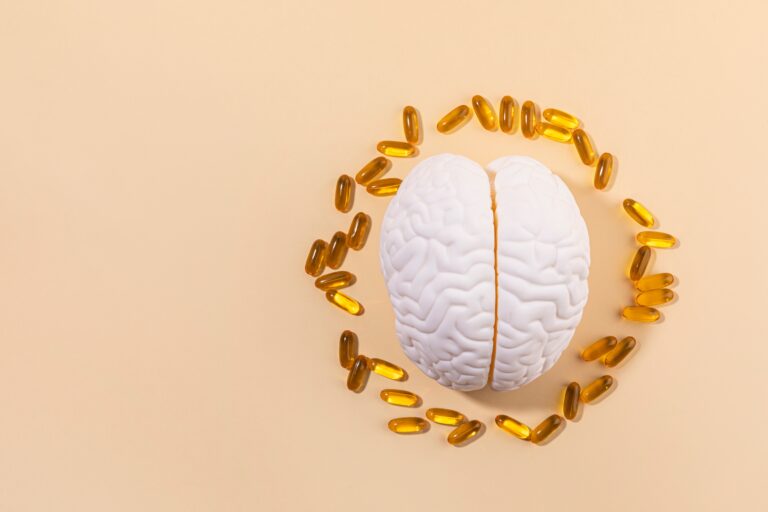Minerals: Inorganic Cofactors for Healthy Cells
Minerals: Inorganic Cofactors for Healthy Cells
Minerals are vital to the health of cells and tissues. One of the most important roles of minerals as micronutrients is as cofactors for enzymes and reactions that are constantly happening in the body.
Minerals serve as cofactors in nearly every cell type and tissue in the body. They help build strong bones and teeth, maintain normal blood glucose levels, and regulate fluid balance, among many other functions. Minerals are uniquely suited to work as cofactors because they can fluctuate between different oxidative states, an important feature of several types of reactions. Consuming adequate levels of minerals ensures proper functioning of hundreds of cellular processes which are essential for healthy metabolism.
While both cofactors and coenzymes help an enzyme or protein function correctly, there are distinct differences between them. Coenzymes are typically organic molecules that bind to the active site of an enzyme and aid in the recruitment of the substrate to begin catalysis. A cofactor, on the other hand, can be organic or inorganic, and does not bind the active site, but rather a different part of the protein, to recruit and facilitate the binding of substrates and aid in catalysis. Cofactors are usually metal ions and increase the rate of a reaction, which is what allows the body to complete all necessary reactions.
Macrominerals
Calcium
Calcium is the fifth most abundant element in the human body, with 99 percent found in bones and teeth.1 Bone tissue is not a stagnant sink for calcium, however. It serves as a dynamic pool from which calcium can be pulled to maintain proper concentrations inside and outside of cells. The one percent of calcium not stored in the skeletal system performs vital functions including transmission of nerve impulses, muscle contraction, activation of several coagulation factors involved in blood clotting, modulation of wound healing, communication between immune cells, insulin secretion from pancreatic beta-cells, and cellular signaling.1-5
Phosphorus
Phosphorus is a central regulator of calcium and vitamin D metabolism – and therefore bone health. In addition to being stored in bones, about 15 percent of phosphorus is found elsewhere, including soft tissues and extracellular fluids. Phosphorus plays an important role in energy metabolism, cell structure, and intracellular signaling.1 It also functions in:
- Skeletal development6
- Mineral metabolism6
- Cellular signaling including pancreatic insulin secretion, endothelial function, and cell growth6
- Structural components of phospholipids in membranes, DNA and RNA, and ATP6
- Phosphorylation reactions in the body which are critical to signaling and metabolism6
- Enzymatic processes including energy production and oxygenation of tissues6
- Maintaining total body pH6
Magnesium
Magnesium is one of the most essential cofactors in the human body and is utilized in over 300 metabolic reactions including protein synthesis, cellular signaling, and blood pressure regulation.7,8 One enzyme that utilizes magnesium is the sodium/potassium ATPase. This pump is critical for the healthy functioning of cells and every tissue relies on the actions of sodium-potassium pumps to maintain normal physiologic processes. The active transport of both calcium and potassium in and out of cells is very important for nerve impulse conduction, muscle contraction, and heart function.7,8
Magnesium is also important in blood glucose and insulin regulation, specifically regulating glucose signaling pathways, release of glucose from glycogen, and glucose entry into cells via glucose transporters.8 Magnesium also provides structural support within cells. It is required for both DNA and RNA synthesis as well as for energy production in the form of ATP.7 Magnesium deficiency or impairment of magnesium-dependent enzymes has been associated with several disease states including hypertension, cardiovascular disease, type 2 diabetes, stroke, seizures, migraine headaches, ADHD, and Alzheimer’s disease.7,8
Potassium
The gradient of potassium inside and outside of cells is vital in transmitting cellular signals through the membrane potential. This is accomplished through sodium/potassium ATPase pumps which are expressed throughout cells and control the physiological excitability of cells.9,10 This membrane potential coordinates many cellular processes, drives the transmission of nerve impulses, and aids in muscle contraction. Potassium also works in tandem with sodium to maintain proper fluid balance. As potassium is pumped into cells, sodium is pumped out, which water then follows. Potassium also plays a role in calcium balance within the body, although the precise mechanism has not yet been not fully elucidated.11 Consuming adequate levels of potassium, primarily through a diet high in fruits and vegetables, may be one of the most effective strategies to lower blood pressure (along with decreasing sodium intake). High intake of potassium may also help improve and protect renal function as well as improve glucose control and insulin resistance through potassium-related insulin secretion.9
Sodium
Sodium is most often discussed for its role in affecting blood pressure, and many studies have validated that an increase in dietary sodium results in increased blood pressure.12 Similar to potassium, sodium is also involved in water balance. High consumption of sodium may induce water retention in the short term, but over a long time, high intake of sodium can cause changes in arteries as well as cause microvascular endothelial inflammation and arterial stiffness which may contribute to cardiovascular disease development.12
Sodium also regulates the excretion of calcium from cells via the Na+/Ca2+ exchanger. Nearly every cell and tissue contain this protein, and the bi-directional exchange of calcium and sodium is critical for proper cellular signaling and maintenance of proper ion gradients inside and outside the cell. Additionally, these exchangers, as well as the presence of sodium, is important in neurotransmission.13 Sodium is also involved in the active transport of glucose and amino acids through its role in sodium-glucose cotransporters and sodium-glutamate transporters, respectively. There are several isoforms of sodium-glucose cotransporters expressed in different tissues, and their regulation is complex. The action of sodium-glutamate transporters in the brain is critical for properly functioning neuronal signaling.14
Chloride
Similar to other electrolytes, chloride is part of a system that enables transmission of nerve impulses. It also regulates cell volume, fluid transport, and muscle contraction.15,16 Chloride travels through ion channels, and these chloride channels are very diverse in function. They also play a role in disease and are utilized and activated by other ions including calcium, further complicating the relationship between several minerals.15,16 The ability of chloride to form acids serves many purposes in the body:
- In immunity and infection, the formation of hypochlorous acid is a potent antimicrobial agent involved in defense mechanisms17
- In acid-base balance in the body, including inducing metabolic acidosis if chloride is consumed in excess amounts16
- In aiding in digestion and absorption of nutrients through the formation hydrochloric acid in the stomach16
Trace minerals
Iron
Iron is a tightly regulated mineral in the body and is essential to several important processes in humans. The ability of iron to switch between oxidation states as well as form iron-sulfur clusters is fundamental to its role in oxygen transport and sensing as well as cellular respiration and energy-producing pathways.18-20 However, its ability to readily exchange electrons means it can also lead to the formation of reactive oxygen species and oxidative stress, lipid peroxidation, and DNA damage.18,19 Iron is a critical component of both hemoglobin and myoglobin where it facilitates the binding of oxygen, which is then delivered to tissues.19 Iron containing proteins are also involved in a number of other cellular processes including xenobiotic transformation, the excretion of organic compounds, nucleic acid replication and repair, and cellular signaling.20 Iron is also a cofactor for enzymes involved in the synthesis of neurotransmitters and normal brain functioning, and it plays a role in nutritional immunity.18.,19
Zinc
Zinc is the second most abundant trace mineral, is required by more than 300 enzymes, and binds to over 2500 proteins – approximately 10 percent of all human proteins.21,22 Zinc concentrations inside and outside of the cell are tightly regulated through the actions of the two major zinc transporter families: ZIP and ZnT. These transporters move zinc in opposite directions as required to direct cellular processes and maintain the signaling of stimuli.21 These transporters are uniquely expressed in different tissues and in response to external signals as well as being localized in different cells and subcellular compartments.21 Other functions of zinc include:
- Regulation of bone homeostasis23
- Structural component for proteins involved in blood pressure regulation and DNA repair22
- Antioxidant defense as part of copper/zinc superoxide dismutase21
- Regulation of production of pro-inflammatory cytokines and apoptosis21
- Improving taste acuity in certain populations24
- Regulation of heme synthesis and DNA/RNA synthesis22
- Reproduction including sperm health and motility25
- Production, storage, and transport of major sex hormones25
- Component of most immunological reactions21
- Redox-neutral replacement of other metals in redox reactions to reduce oxidative burden21
Copper
Copper is a component of many enzymes and transcription factors that regulate processes including energy production, cellular proliferation, and oxidation. Copper is also a critical piece of the enzyme Cu-Zn SOD (superoxide dismutase) which neutralizes radical anions, converting them into more stable molecules. If copper is deficient, the activity of this enzyme is limited, leading to oxidative stress. Copper also supports mitochondrial respiration, iron homeostasis, and the development of connective tissue.26
Manganese
Similar to copper and zinc, manganese is an essential component of a superoxide dismutase enzyme (MnSOD) which reduces oxidative stress in cells.27 Manganese is involved in the function of many enzymes including those involved in the metabolism of amino acids, glucose, and lipids, collagen formation, hematopoiesis, and immune function. Manganese also affects the absorption and metabolism of other metals including zinc and iron.27 Manganese has been associated with obesity and type 2 diabetes, although the exact relationship is not fully understood.27
Iodine
Iodine is primarily found in dairy products, iodized salt, and marine plants. It is vital to the health of the thyroid gland. Low intake of iodine leads to decreased production of thyroid hormone, which in turn causes the thyroid gland to attempt increasing production by increasing in size and release of thyroid stimulating hormone (TSH) from the pituitary gland. TSH stimulates growth of the thyroid when it is taken up, leading to further enlargement of the thyroid gland and the development of goiter.28 Additionally, iodine is essential during pregnancy. Before the fetus develops thyroid tissue in the first trimester, it relies on maternal sources; inadequate iodine intake can cause maternal hypothyroidism and consequently irreversible brain damage in the developing fetus.29
Selenium
Selenium is unique from other minerals in that it is incorporated directly into proteins to form selenoproteins. Selenium enhances the immune response through increased production of cytokines and involvement in immunoglobulin production.30 It is also key to many reactions as a component of enzymes including:
- Glutathione peroxidase and glutathione reductase, which are involved in glutathione metabolism, redox balance, and oxidative stress27,30
- Iodothyronine deiodinases, which are involved in the activation and deactivation of thyroid hormones26,30
Chromium
Chromium is another mineral that can be found in different oxidation states. However, much less is known about the mechanism of action of chromium than many other minerals and there is no standard biomarker to assess chromium status. Chromium may play a role in regulating carbohydrate and lipid metabolism possibly through the actions of insulin, although studies have often produced conflicting results.31,32
Conclusion
Minerals are vital cofactors for many reactions and have diverse functions throughout the cells in the body. Altered metabolism of micronutrients due to insufficient intake or ineffective utilization can have profound effects on the body and may lead to health concerns such as cardiovascular disease or type 2 diabetes.
- Peacock, M. (2010). Calcium metabolism in health and disease. Clin J Am Soc Nephrol, 5:S23-S30.
- Ahn, C., Kang, J., Jeung, E. (2017). Calcium homeostasis in diabetes mellitus. J Vet Sci, 18(3):261-266.
- Singh, S., Dodt, J., Volkers, P., Hethershaw, E., Philippou, H., Ivaskevicius, V., Imhof, D., Oldenburg, J., Biswas, A. (2019). Structure functional insights into calcium binding during the activation of coagulation factor XIIIA. Sci Rep, 9(1):11324-11341.
- Subramaniam, T., Fauzi, M.B., Lokanathan, Y., Law, J.X. (2021). The role of calcium in wound healing. Int J Mol Sci, 22(12):6486-6499.
- Kaschek, L., Zöphel, S., Knörck, A., Hoth, M. (2021). A calcium optimum for cytotoxic T lymphocyte and natural killer cell cytotoxicity. Semin Cell Dev Biol, 115:10-18.
- Kritmetapak, K., Kumar, R. (2021). Phosphate as a signaling molecule. Calcif Tissue Int, 108(1):16-31.
- Gröber, U., Schmidt, J., Kisters, K. (2015). Magnesium in prevention and therapy. Nutrients, 7(9):8199-8226.
- Volpe, S.L. (2013). Magnesium in disease prevention and overall health. Adv Nutr, 4(3):378S-383S.
- Stone, M.S., Martyn, L., Weaver, C.M. (2016). Potassium intake, bioavailability, hypertension, and glucose control. Nutrients, 8(7):444-456.
- McDonough, A.A., Youn, J.H. (2017). Potassium homeostasis: the knowns, the unknowns, and the health benefits. Physiology, 32(2):100-111.
- Weaver, C.M. (2013). Potassium and health. Adv Nutr, 4(3):368S-377S.
- Grillo, A., Salvi, L., Coruzzi, P., Salvi, P., Parati, G. (2019). Sodium intake and hypertension. Nutrients, 11(9):1970-1985.
- Verkhratsky, A., Trebak, M., Perocchi, F., Khananshvili, D., Sekler, I. (2018). Crosslink between calcium and sodium signalling. Exp Physiol, 103(2):157-169.
- Balcar, V.J. (2002). Molecular pharmacology of the Na+-dependent transport of acidic amino acids in the mammalian central nervous system. Biol Pharm Bull, 25(3):291-301.
- Verkman, A.S., Galietta, L.J.V. (2009). Chloride channels as drug targets. Nat Rev Drug Discov, 8(2):153-171.
- Yunos, N.M., Bellomo, R., Story, D., Kellum, J. (2010). Bench-to-bedside review: Chloride in critical illness. Crit Care, 14 (4):226-235.
- Wang, G., Nauseef, W.M. (2015). Salt, chloride, bleach, and innate host defense. J Leukocyte Biol, 98(2):163-172.
- Gozzelino, R., Arosio, P. (2016). Iron homeostasis in health and disease. Int J Mol Sci, 17(1):130-143.
- Oliveira, F., Rocha, S., Fernandes, R. (2014). Iron metabolism: from health to disease. J Clin Lab Anal, 28:210-218.
- Dev, S., Babitt, J.L. (2017). Overview of iron metabolism in health and disease. Hemodial Int, 21:S6-S20.
- Gammoh, N.Z., Rink, L. (2017). Zinc in infection and inflammation. Nutrients, 9(6):624-648.
- Choi, S., Liu, X., Pan, Z. (2018). Zinc deficiency and cellular oxidative stress: prognostic implications in cardiovascular diseases. Acta Pharmacol Sin, 39(7):1120-1132.
- Huang, T., Yan, G., Guan, M. (2020). Zinc homeostasis in bone: zinc transporters and bone diseases. Int J Mol Sci, 21(4): 1236-1247.
- Stewart-Knox, B.J., Simpson, E.E.A., Parr, H., Rae, G., Polito, A., Intorre, F., Sanchez, M.A., Meunier, N., O’Connor, J.M., Maiani, G., Coudray, C., Strain, J.J. (2008). Taste acuity in response to zinc supplementation in older Europeans. Brit J Nutr, 99(1):129-136.
- Vickram, S., Rohini, K., Srinivasan, S., Veenakumari, D.N., Archana, K., Anbarasu, K., Jeyanthi, P., Thanigaivel, S., Goluthungan, G., Rajendiran, N., Srikumar, P.S. (2021). Role of zinc (Zn) in human reproduction: a journey from initial spermatogenesis to childbirth. Int J Mol Sci, 22(4):2188-2204.
- Farag, M.A., Hamouda, S., Gomaa, S., Agboluaje, A.A., Hariri, M.L.M., Yousof, S.M. (2021). Dietary micronutrients from zygote to senility: updated review of minerals’ role and orchestration in human nutrition through life cycle with sex differences. Nutrients, 13 (11):3740-3762.
- Li, L., Yang, X. (2018). The essential element manganese, oxidative stress, and metabolic diseases: links and interactions. Oxid Med Cell Longev, 2018:1-11.
- Leung, A.M., Braverman, L.E. (2012). Iodine-induced thyroid dysfunction. Curr Opin Endocrinol Diabetes Obes, 19(5): 414-419.
- Niwattisaiwong, S., Burman, K.D., Li-ng, M. (2017). Iodine deficiency: clinical implications. Clev Clin J Med, 84(3):236-244.
- Kieliszek, M. (2019). Selenium- fascinating microelement, properties and sources in food. Molecules, 24(7):1298-1311.
- Dubey, P., Thakur, V., Chattopadhyay, M. (2020). Role of minerals and trace elements in diabetes and insulin resistance. Nutrients, 12(6):1864-1880.
- Martín, I.S.M., León, A.M.R., Martín, M.A.C., Vilar, E.G., Collado-Yurrita, L., de Mateo-Silleras, B., del Río, M.P.R. (2016). Chromium supplementation in patients with type 2 diabetes and high risk of type 2 diabetes: a meta-analysis of randomized controlled trials. Nutr Hosp, 33(1):156-161.







